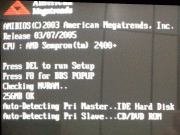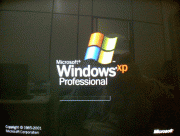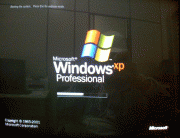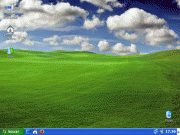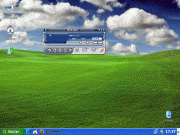Well, as I said before, I will discuss in this post about how to perform a migration. The subject of migration can not be seen as something simple. But with the experiences I've had, with a few simple tips, you can perform a migration as smoothly as possible.
Make no mistake. In migration, what will count most, won't be shiny graphical interfaces, bells and whistles. No. And even if it is possible to migrate the installed systems to more efficient ones, from a technical point of view, either from an economic standpoint, and why not say more ecologically correct technology, the most sensitive part, the field of battle that's going to determine whether migration is a triumph or a flop, is the people.
Why Migrate?
Several reasons arise:
- Cost / benefit: The annual fees of licensing contracts paid to proprietary software companies are huge expenses and possibly a 'dead' money because you pay for what you already have, not for something new.
- Existing hardware: As software updates push the hardware upgrades, and, as I wrote before in another post, you can migrate the software to take advantage of your existing hardware. The famous TCO is much lower then.
- Update the software used to more modern versions: Many companies running older versions of windows, are also still running older versions of Office suite from Microsoft. Result: Incompatibility with the most recent file formats (DOCX and XLSX)
- Standardization in open formats for your files (your documents will thank you)
Well, it's no use a faster operating system, better memory management, protection between applications and system code, if the users to be , speak out against it.
Yes, make no mistake. You can have all the advantages: cost effectiveness, speed, a clever use of hardware resources. But where the migrations fail, it is in human beings. And how does this happen??
A well done marketing, that hid the dirt under the carpet.
Two well recognized companies (a software one, and a software + hardware one) sold the idea that computers should be like microwave ovens, so easy to operate as a lamp. You only turn on and don't have to worry about anything else. Computers would be an appliance.
Well, I'm sorry to inform this, but that marketing was very exaggerated. Very unrealistic. Computers are intelligent machines, they need intelligence to work properly. And, generally, reflect the intelligence of the user who operates them.
I would say that computers are more like cars, that, if you do not know how to drive them, they will cause much damage and even death. Back to the migration subject, a major source of headache is the so called training for the new platform. And the cost of this training is also mentioned as a reason not to migrate.
But, and before the current system was deployed? How was before? There was no training, no learning curve in that system???
There was. In the house of accounting employee, for example, he was using pirated versions of Excel, Word, Power Point. Thus, it was easy to learn to deal with these applications. And that is where piracy pays off for large proprietary software companies. With learning 'at home', the employee is already prepared and familiar with the same versions of applications that he will find at work.
As we live in times of high competitiveness, it is a factor in keeping one's job to know how to deal with office suites. And, having familiarity with the programs, it's easier to both keep the job, and aim for a better one.
The Human Factor --
We have seen that office workers are not even being trained in the dominant office suite . A better word would be that they are 'indoctrinated' to work with this suite and the dominant operating system, cutting costs for employers and learning time. And when it comes to a migration that will change the entire operating system and applications in the workplace ... Terror spreads, and immediate opposition ensues.
This happens because the workers do not look at their machines as a better tool than a pencil sharpener or stapler . So, why be interested in learning how to use it better? No. .. Knowing where is the 'Start' button and when to press it is enough.
And, migration is viewed with deep suspicion, as something that will expose incompetence.
Thus, the software / operating system to be implemented already has critics and opponents long before you start the migration work. It won't take long, and you'll hear: "Ahhh, but this damned: Linux, Open Office, Firefox, ... ............. (fill in the dots) does not work right. All poorly done, something that is free of charge is garbage anyway" ... That and perhaps more.
-And how to handle it ...
Well, the advice that I will enumerate hereafter are more for the human side (and less for the technical side of things) because an event such as a migration is something big enough to ignite rivalries or be used as a weapon to hurt the opponents at the workplace.
- Converse. Talk a lot. Starting with the supervisor, to schedule a consistent plan of action for the migration.
- It should be observed in the migration plan that, by common sense, it is mandatory that employees begin to work with the open source applications (FOSS) on the current platform. Indeed, this is the most valuable advice of all: Get the employees used with the applications they will use in the free platform (Linux, mostly) still on the proprietary platform (windows, most of the time)
- There must be a deep degree of sensitivity to reassure employees of the good faith of their managers, while in the process of migration. The attitudes of management should be to pacify exalted moods, and especially dismiss the idea that the migration is an act of tyranny. If this unfortunate interpretation happens, inevitably, there will be rebellion and dissent. Unfortunately, history shows us that for every tyrant, there is rebellion and fights in the same degree. And in this case, controversy and discussion about the platform being deployed will only create confusion, and there will be loss of time and money.
- Always there should be a testing project, done on a small scale, after all, every case is different, and in a testing situation, so to speak, it will be easier to identify how the migration will occur in the rest of the organization.
And last but not least, I went to the point of making up Linux to look like windows, so that employees of a client of mine would not strange it at first. The distro I used in this case was the PCLOS 2009, but any Linux distro, whether KDE, Gnome or XFCE can be configured to resemble graphically with other operating systems (MAC / OSX, Windows, Solaris, BSD, etc. ...)
Well, let's see how this operating system turned out visually...
Computer turned on, POST screen
So far, so good, the GRUB screen
Here things get interesting ... Windows XP??
A closer look can already see the message “Esc for verbose mode ...” Eheheheh
Starting up the 'windows' interface...
Here, the traditional Bliss windows desktop (traditional, but not the same as the original XP)
For the staff do not fret, Open Office 3.1 , Kaffeine and XMMS with winamp's skin...
Ahhh, before lawyers start to send me letters of cease and desist, all the graphics to make this 'makeup' were found in the following sites:
The bootsplash screen:
The theme of Kbfx skin and the kicker
The window decoration AKDC Luna:
Wallpapers Bliss
For best effect, I suggest you to leave the Grub timeout = 1, so the Grub menu just flashes in the screen and the loading screen (windows XP) appears.
I think some have already gone through a migration process . I bet many already know the advices that I gave here. But I believe that most will find interesting and useful to have this view of human behavior in a migration process .
